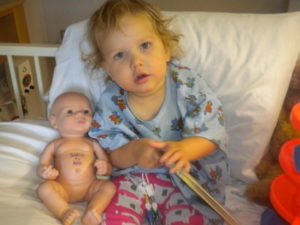 As America’s lawmakers debate various ways to fix our broken health care system, we in the rare disease community are alarmed by proposed cuts to Medicaid funding. The term “rare disease” is a bit paradoxical. When viewed individually, a particular disease may affect a minuscule portion of the population. But when considered as a whole, roughly 1 in 10 Americans live with a rare disorder. For some the rare disease is progressive and eventually fatal, as in the case of those of us parents who have watched our children develop typically before the onset of a neurodegenerative disease slowly robs them of their function and eventually their lives. For others, the disorder is manageable with diet modifications, scrupulous monitoring by medical specialists, or changes to our environments that allow us to work and function in society.
As America’s lawmakers debate various ways to fix our broken health care system, we in the rare disease community are alarmed by proposed cuts to Medicaid funding. The term “rare disease” is a bit paradoxical. When viewed individually, a particular disease may affect a minuscule portion of the population. But when considered as a whole, roughly 1 in 10 Americans live with a rare disorder. For some the rare disease is progressive and eventually fatal, as in the case of those of us parents who have watched our children develop typically before the onset of a neurodegenerative disease slowly robs them of their function and eventually their lives. For others, the disorder is manageable with diet modifications, scrupulous monitoring by medical specialists, or changes to our environments that allow us to work and function in society.
Nearly all of us have lived through the frustrating experience of the “diagnostic odyssey.” The diagnostic odyssey is a term used to describe the journey through the medical system a rare disease patient makes in order to receive a diagnosis. The average rare disease patient often waits months to years for a diagnosis and is misdiagnosed multiple times. The financial devastation for a patient on this journey is often extraordinary and the prolonged time spent searching for a diagnosis has a negative impact on an individual’s ability to stay employed and maintain insurance coverage. At the end of this odyssey, the relief of finally getting an answer is quickly replaced by the painful fact that only about 300 of the 7,000 rare diseases have any sort of an effective treatment.
Because society has not found cures or effective treatments for even 5% of rare diseases, our community depends on social safety nets for our survival. While many Americans think of Medicaid as primarily a program for low-income families, Medicaid is also a lifeline for the disabled community made up of people who face a lifetime of chronic illness. For those of us with impaired children and full time jobs, Medicaid subsidizes our private insurance with specialized care so that we can go to work and remain taxpayers. Medicaid is the difference between putting our children in a nursing home (a far more expensive option in the long run) or having them home with their siblings and parents. For working adults with a rare condition, Medicaid is the assurance that if our disease increases in severity – as it does at unpredictable times – we won’t go without vital medical care between losing one job and finding another. Medicaid is the knowledge for those of us who are caregivers for our disabled adult children that when we can longer work and provide private insurance coverage our children will still be cared for.
Our rare disease community is vast and diverse. Rare diseases do not discriminate between race, socioeconomic status, or geographical region. We hear people casually repeat caricatures of Medicaid recipients and we wince at the oversimplifications. When we listen to the debates raging around us regarding the future of Medicaid we simply ask you to look past the stereotypes and consider the very real consequences Medicaid cuts will have on real people in your community living with rare diseases.
